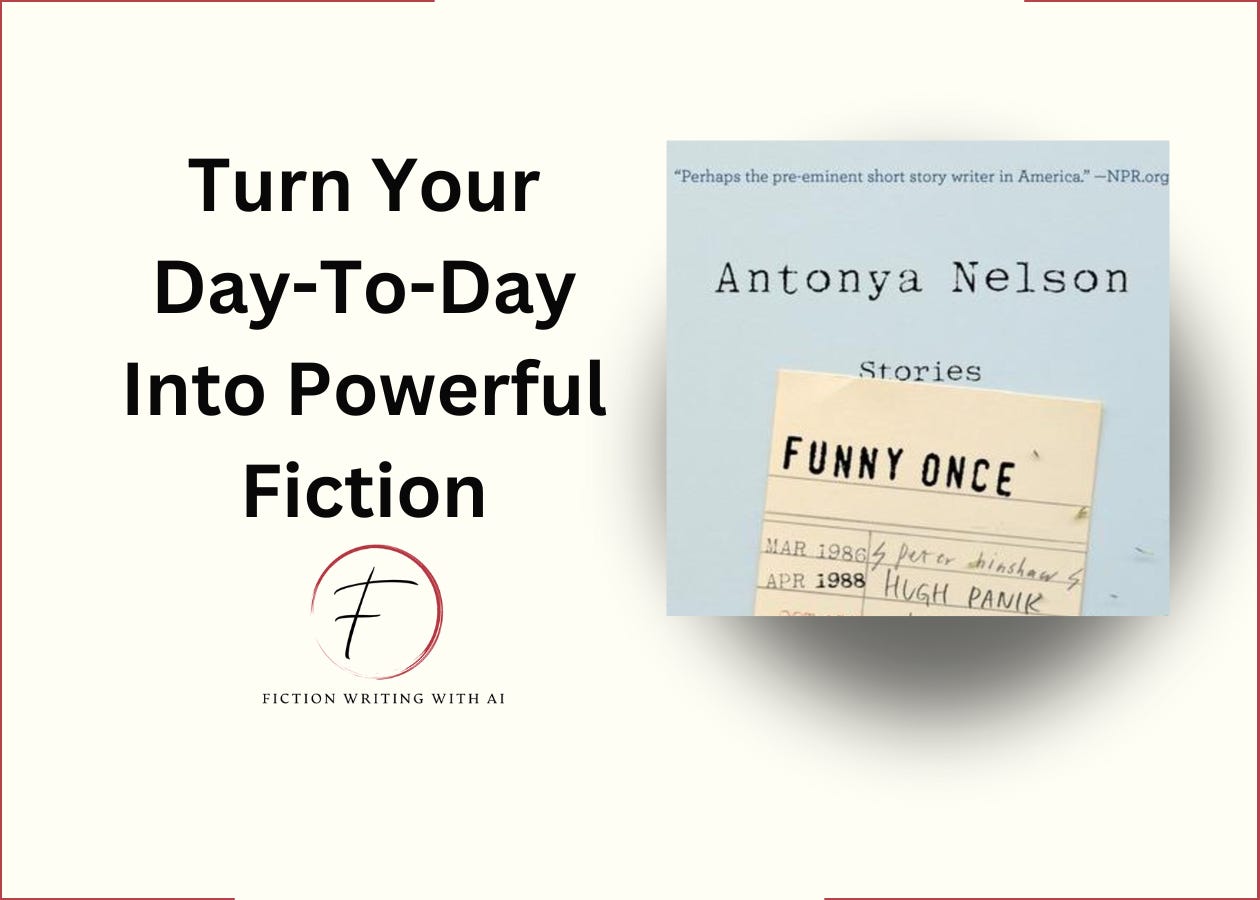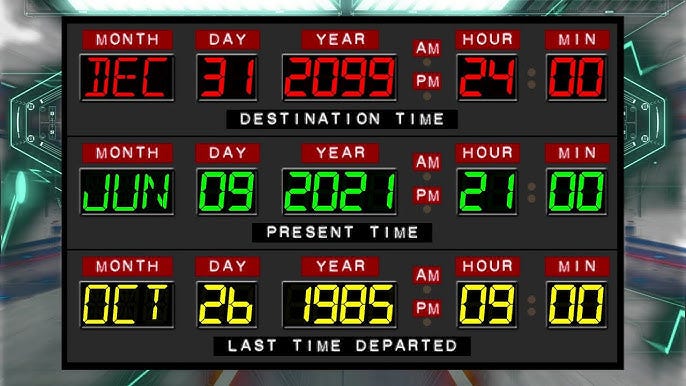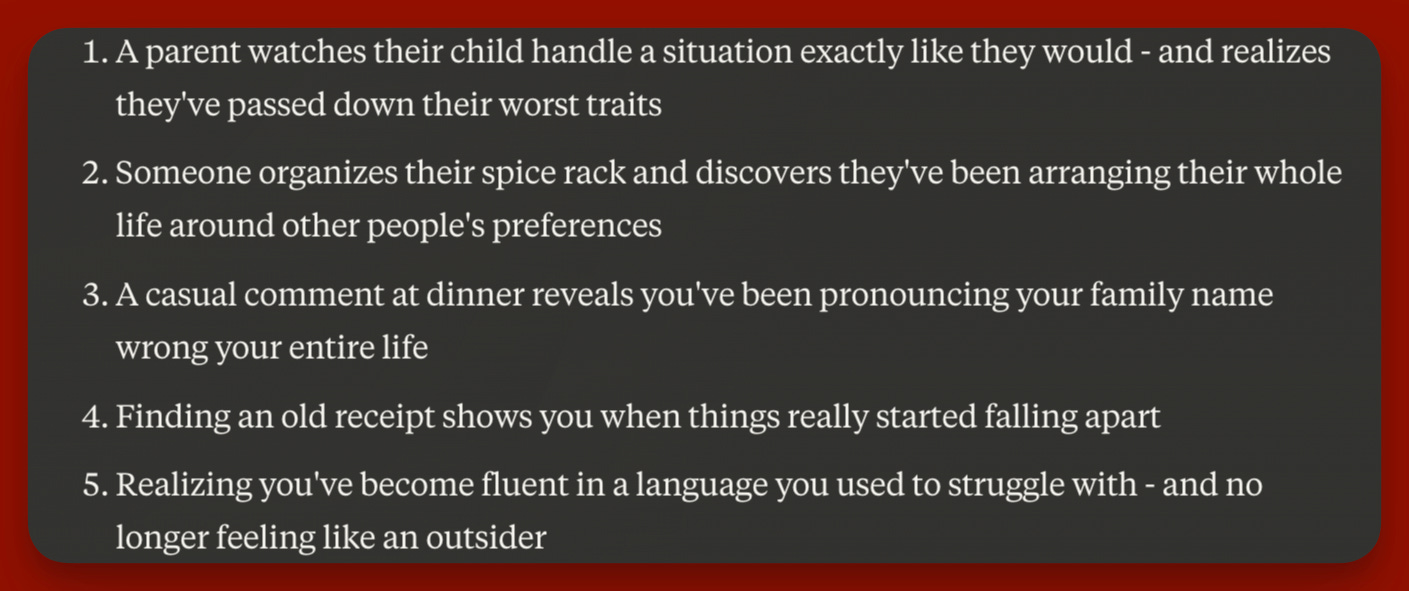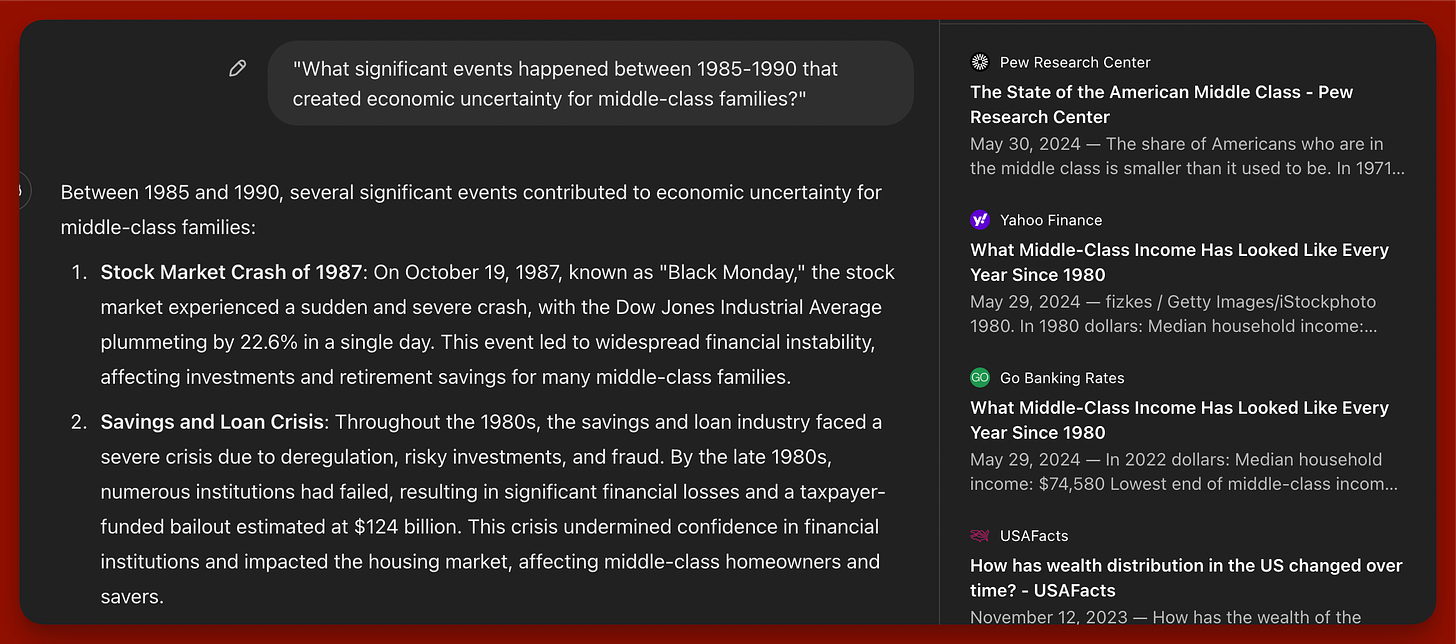Great writers don't “wait” for inspiration.
They sit down, pull out a proven framework, and write.
Antonya Nelson has published seven short story collections, four books, and her work appears regularly in The New Yorker, Esquire, and Harper's.
And guess what?
She uses a 9-step story framework.
Her framework helps you with three things:
It gives you a simple starting point
It ensures your story has the right elements
And it keeps you moving forward
Let me show you how it works (with and without AI).
1. Start With An Ordinary Everyday Event To Set The Foundation For Your Story
Think about something that happened to you.
A minor incident.
An awkward conversation.
An inconvenience or mishap.
Then, raise the stakes—and make it fiction.
Let's say you were locked out of your apartment. You call a locksmith to let you in. Problem solved. It's a true story. But what if instead of calling for help, you break in through a basement window, stumble over a box, and discover your partner is leading a double life.
Now you've got a story.
Need some help? Use AI as your creative partner. Feed it prompts like:
How could this minor incident spiral into something bigger?
What if the smallest detail here is actually a life-altering clue?
How would this scenario unravel if everyone involved had a hidden agenda?
2. Retell The Story From An Unexpected Perspective
Experiment with narrating from an unconventional perspective, like that of an object or an onlooker.
For example:
A coffee mug watching a couple's last breakfast together
An engagement ring that gets pawned three different times
A painting on the wall observing decades of family drama
An exhausted waiter who’s served the same couple every week
A nosy neighbor watching from a window who misinterprets every detail.
A ghost of a previous homeowner, disturbed by the new residents' drama.
3. Add Time Pressure
Every great story needs a ticking clock.
"This family reunion lasts exactly 4 hours"
"A 24-hour window to make an impossible choice"
"The protagonist has until sunrise to return what they stole"
“Marty McFly must get his parents to fall in love and then return to the future before he fades from existence.”
Time constraints build tension.
And tension holds your reader’s attention.
4. Incorporate A Symbolic Object To Influence Your Plot
Think about what's in your character's pockets right now. Their kitchen drawer. Their bedside table.
These objects carry stories.
For example, imagine a character who keeps their grandfather's broken pocket watch. On the surface, it's just an old timepiece. But it could represent:
Their relationship with time
The weight of their family legacy
A promise they made to their grandfather
Their fear of running out of time themselves
A single object can work on multiple levels.
Here's how you can use AI to deepen the meaning of any object in your story:
First, list potential objects that could appear in the story, or ask AI for help:
What everyday object could represent [your theme]?
Generate a list of objects that might be meaningful to [your character]
What object would create conflict between these two characters?
Then follow up and ask:
What different meanings could this object hold for different characters?
Finally, explore how the object can drive the action in your story:
I want to write a short story where [object] with meaning [the meaning] drives the plot.
Please generate 5 different ways this [object] could create conflict, force decisions, reveal secrets, or change relationships between characters. For each scenario, explain:
- The initial situation with the object
- What specific action or decision the object forces
- How this changes relationships or reveals character
Please keep the scenarios grounded and focused on human drama rather than fantastical events.
Note: The object isn't the story. But it can help you tell it in a deeper, more resonant way.
5. Focus On The Moment Everything Changes
Every memorable story hinges on a moment of change.
Not explosions or car chases. Real transformation happens in quiet moments—a conversation at 2 AM, a missed phone call, the way someone stirs their coffee.
These moments work because they're universal.
The most powerful changes often happen between breaths:
The pause before responding
The moment before opening a door
The space between question and answer
Let AI help you explore these spaces. Ask it to generate:
Time-slowing details
Subtle shifts in perception
Ways the familiar becomes strange
Physical sensations during moments of realization
For example:
"Show me 5 ordinary settings where someone might realize their marriage is over” or "Generate subtle ways a character could discover they've been living a lie"
Remember: Changes don't need to be loud.
7. Ground The Story In Reality
"Even fictional people live through history.”
Real events create texture.
A couple arguing about dishes while protest sirens wail outside
A teenager learning to drive during a gas shortage from Hurricane Helene
A first date happening the day Matthew Perry dies
Integrate a historical or recent event to ground your story in a relatable reality. Whether it’s a natural disaster, a social movement, or an economic shift, this can give your story context and relatability.
ChatGPT can generate potential events based on your setting, adding a sense of place and time. For example:
Your story still belongs to your characters.
The real events just help readers understand the world they inhabit.
6. Build In Opposing Forces
Stories move forward through conflict.
Without opposing forces, characters have nothing to overcome, no reason to change, no journey to complete. The key is finding the right level of tension. Too much creates melodrama. Too little leads to boredom.
Your role as the writer is to find that sweet spot where tension serves the story without overwhelming it.
A few examples;
The optimist vs the cynic
The rule-follower vs the rebel
The traditionalist vs the innovator
The practical sister vs the dreamer
The risk-taker vs the cautious planner
Great stories live in the space between opposing forces.
Try this simple process with AI.
Ask AI to generate relevant opposing forces: "What are the main opposing forces in stories about family loyalty?"
Then choose the most interesting tension pairs
Ask AI to brainstorm specific scenarios where these forces clash: "Generate 5 scenes where tradition and progress create conflict in a family business"
Build your story around these points of tension
Keep in mind:
You don’t have to resolve every conflict. Sometimes the most powerful endings leave tensions intact, forcing readers to grapple with the same conflicts as your characters.
8. Let The Setting Do Some Heavy Lifting
Setting is more than scenery.
Physical spaces shape everything about human experience.
The cramped elevator where you first notice your hands shaking.
The empty playground at midnight that makes your chest tight.
The familiar smell of your grandmother's kitchen that brings tears without warning.
Space can tell as much story as your dialogue. Sometimes more.
Before describing any location, identify the core emotion you want readers to feel in the space.
Feed ChatGPT prompts like:
"What physical spaces naturally evoke loneliness?"
"Which environments create a sense of being trapped?"
"What settings naturally build tension between characters?"
Let the AI generate options, then choose ones that resonate with your story's theme.
9. Build Anticipation With Repetition
Repetition creates a rhythm that pulls readers through your story
You can repeat things like objects, for example a watch. Or actions, like Jake Gyllenhaal’s frequent eye blinking in the film Prisoners. Even repeating a phrase that gains new meaning each time it's used.
The secret is transformation.
Each time your repeated element appears, it should carry more weight and reveal new meaning.
For example:
Scene 1: Character checks their watch out of habit
Scene 2: Watch starts running slow, creating doubt
Scene 3: Watch stops completely at the moment of decision
Scene 4: Character finally takes off the watch, symbolizing change
Hew’s how AI can help you map this progression:
"Show me how [repeating element] could evolve in meaning from:
- First appearance (ordinary)
- Middle appearance (tension building)
- Final appearance (revelation)"
That’s it.
You can walk through all 9 steps and use the individual prompts as you go, or for an interactive story building experience you can use use the Antonya Nelson prompt.
The Antonya Nelson Short Story Prompt
This prompt helps you write a short story using Nelson's framework.
It works by:
Taking your initial story concept
Running it through the 9-step framework
Generating multiple creative variations
Here's the prompt:
Keep reading with a 7-day free trial
Subscribe to Fiction Writing With AI to keep reading this post and get 7 days of free access to the full post archives.







